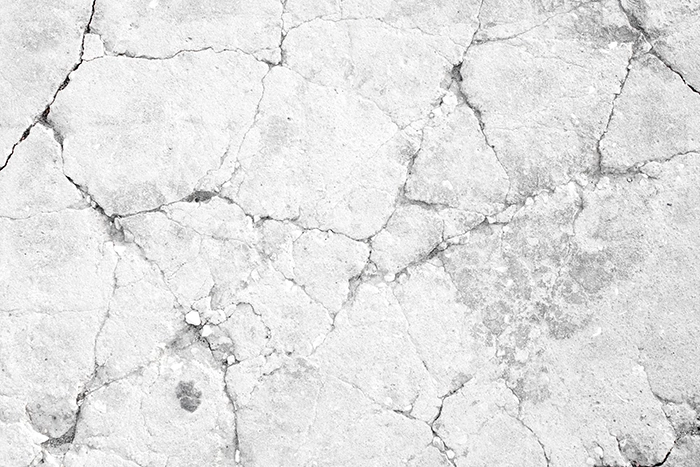Spalling concrete making your home feel 50 years older? Are you tense about how your not-even 5-year-old driveway looks chipped and worn out? Then you’ve come to the right place!
Concrete is a material that is used almost everywhere in construction. Concrete is a builder’s best friend, from making your foundations strong and sturdy to giving your driveway the perfect smooth surface for your car’s tires.
However, even our best relationships need maintenance from time to time. If neglected, concrete can begin to show major signs of wear and tear such as developing cracks, and even, what may seem like permanent oil stains.
One of the most common examples of neglect is spalling concrete. Lucky for you, today’s topic of discussion is exactly this! We will be discussing its causes, solutions, and how you can prevent spalling from happening from ever happening in the first place.
What Is Concrete Spalling?
Concrete spalling is a type of damage that occurs when pieces of concrete break away from the surface, often revealing the underlying reinforcement bars. It looks like small chips or larger chunks of concrete missing from the surface, sometimes creating a pitted or honeycomb-like appearance.
The verb “spall” means to break off into chips or flakes. When applied to concrete, “concrete spalling” describes the process where pieces of concrete break away from the surface, often revealing the underlying reinforcement bars. It’s essentially the action of the concrete chipping or flaking off.
This type of concrete problem is very common and many factors contribute to this happening at your property. Let’s look into them.
What Causes Spalling Concrete?
A multitude of factors can contribute to your concrete spalling. There’s not always just one thing that’s affecting the concrete of your home. Usually, a whole lot of factors work together to break down concrete and make it look worn out and damaged. Here are a few of them:
Corrosion of Reinforcing Steel
When water penetrates the concrete and reaches the steel reinforcement bars, it can cause them to rust and expand.
This expansion puts pressure on the surrounding concrete, leading to cracks and eventually spalling. As the corrosion progresses, the concrete surrounding the steel continues to deteriorate, leading to larger and more severe spalling.
Freeze-Thaw Cycles
Freeze-thaw cycles occur when water within the concrete freezes and expands, then thaws and contracts.
This repeated cycle of expansion and contraction puts stress on the concrete, causing it to crack and eventually spall. As the water freezes, it expands by about 9%, exerting pressure on the surrounding concrete. This pressure can exceed the tensile strength of the concrete, leading to cracks and the eventual breaking away of pieces of concrete. Over time, repeated freeze-thaw cycles can cause significant damage to the concrete surface, leading to spalling and other forms of deterioration.
Chemical Attack
Chemical attack occurs when aggressive substances interact with the components of concrete, leading to deterioration and compromise of the material’s structural integrity. Concrete can succumb to various chemical assaults, including exposure to acids, sulfates, chlorides, and other corrosive agents.
For example, acidic substances can react with the calcium hydroxide and calcium silicate hydrates present in concrete, weakening the concrete matrix and causing it to deteriorate, crack, and lose its structural integrity. This can lead to spalling as the weakened concrete flakes off.
Similarly, exposure to de-icing salts or other chloride-based chemicals can penetrate the concrete and accelerate the corrosion of the reinforcing steel.
As the steel corrodes, it expands, putting pressure on the surrounding concrete and causing it to crack and spall.
Poor Construction Practices
Poor construction practices can significantly weaken concrete, making it more susceptible to spalling. Inadequate mixing, improper curing, and insufficient cover over reinforcement are common culprits. Incorrect water-cement ratios and uneven mixing can compromise the concrete’s strength, while inadequate curing time prevents it from gaining sufficient strength, leaving it vulnerable to damage, especially in harsh weather conditions. Insufficient concrete cover over the reinforcing steel increases the risk of corrosion, which can lead to spalling as the steel expands and puts pressure on the concrete.
Additionally, poor finishing techniques, such as rough surfaces or surface defects, can retain moisture and weaken the concrete, accelerating deterioration and increasing the likelihood of spalling.
Thermal Stress
Thermal stress occurs when concrete is subjected to rapid temperature changes.
This can happen due to exposure to fire, extreme heat, or even rapid cooling. As the concrete heats up, the outer layers expand faster than the inner layers, creating a thermal gradient. This temperature difference generates stresses within the concrete, particularly tensile stresses on the surface. If these stresses exceed the tensile strength of the concrete, it can lead to cracking and spalling, especially in areas with high thermal gradients or where the concrete is restrained from expanding freely.
Are Northern States More Likely to Experience Concrete Spalling?
As much as Northern states enjoy having beautiful weather year-round, there is a downside when it comes to spalling concrete. Yes, northern states do have a higher chance of experiencing concrete spalling. The great state of New York and all its counties like Nassau County, Suffolk County, and even wider areas like Queens and Brooklyn aren’t exempt from the harshness of this concrete problem.
Here are some of the factors that contribute to concrete spalling in Queens, Brooklyn, and the great state of New York:
1. De-icing Salt Exposure:
The use of de-icing salts on roads and sidewalks during winter months can accelerate the corrosion of reinforcing steel and contribute to concrete deterioration.
2. Coastal Exposure:
Coastal areas in New York are exposed to harsh weather conditions, including salt spray and wind-driven rain, which can accelerate concrete deterioration.
3. Aging Infrastructure
Many of New York’s infrastructure, including bridges, highways, and buildings, are aging, increasing their vulnerability to various forms of deterioration, including spalling.
Spalling Concrete Prevention
Preventing concrete spalling involves a combination of careful construction practices and ongoing maintenance. Here’s what you can do to prevent further damage:
During and After Construction
It is crucial to ensure proper concrete mix design, thorough curing, sufficient concrete cover over reinforcing steel, and strict quality control. After construction, regular inspections are essential to identify potential issues early on. Applying high-quality penetrating sealers can create a barrier against moisture and chemicals.
Prompt action
Promptly addressing any signs of damage, such as cracks or spalling, is crucial to prevent further deterioration. Minimizing the use of de-icing salts or using salt-resistant concrete can help reduce the risk of corrosion and spalling.
Invest in a Protection System
Additionally, considering corrosion inhibitors or cathodic protection systems for reinforcing steel in aggressive environments can further safeguard the concrete structure.
By combining these preventive measures, it’s possible to significantly reduce the risk of concrete spalling and extend the lifespan of concrete structures.
What Is the Solution for Spalling Concrete?
To address spalling concrete, a combination of repair methods and preventive measures can be employed. Complete removal and replacement with new concrete may be necessary for severe damage. In cases of smaller spalls, patch repair with suitable mortar or concrete can suffice. Surface treatments like concrete overlays or sealants can provide a protective layer.
To prevent future spalling, regular inspections, proper curing, waterproofing, corrosion protection, and chemical resistance measures are crucial. Consulting with a concrete or mudjacking professional is always best to assess the specific situation and develop a tailored repair or prevention plan.
Let the Mudjacking Contractor Help Ease Your Spalling Concrete Worries
Concrete spalling is a serious issue that can lead to significant structural damage and safety hazards. Professional concrete spalling repair is essential to restore the integrity and appearance of your property. Mudjacking Contractor is the premier choice for residents of Queens, Brooklyn, Nassau, and Suffolk County. With their expertise, experience, and commitment to quality, they provide reliable and effective solutions for all your concrete repair needs. By choosing Mudjacking Contractor, you can ensure the longevity and value of your property.
Visit our website today at mudjackingcontractor.com or call us at (347) 284-0280 for a FREE estimate!
FAQs
1. How Do You Fix Spalling Concrete?
Fixing spalling concrete typically involves removing the damaged concrete, repairing the underlying structure, applying a suitable repair material, and protecting the repaired area. Consulting a professional concrete repair contractor is recommended for larger or more complex spalling issues.
____________________________________________________________________________
2. Is Concrete Spalling Serious?
Yes, concrete spalling is serious. It can significantly weaken the structural integrity of concrete structures and lead to further deterioration if left untreated.
____________________________________________________________________________
3. What Causes Spalling of Concrete?
Concrete spalling is primarily caused by factors like rebar corrosion, freeze-thaw cycles, thermal stress, chemical attacks, and poor construction practices.
____________________________________________________________________________
4. What Is the Difference Between Scaling and Spalling Concrete?
Scaling refers to the surface flaking of concrete, while spalling involves the chipping or breaking off of larger chunks of concrete, often exposing the underlying reinforcement. Scaling is generally less severe and primarily affects the cosmetic appearance while spalling can compromise the structural integrity of the concrete.
____________________________________________________________________________
5. What Material Is Used for Spalling Repair?
Repair materials for concrete spalling typically include epoxy-based repair mortars, polymer-modified mortars, and cementitious repair mortars. The specific material used will depend on the severity of the damage and the local environmental conditions.
____________________________________________________________________________
6. What Does Spalling Look Like?
Spalling concrete appears as chipped or broken-off chunks of concrete, often exposing the underlying reinforcement bars. The affected areas may have a rough, uneven surface and can range in size from small chips to large sections of missing concrete.
____________________________________________________________________________
7. How Do You Identify Concrete Spalling?
Concrete spalling is typically identified by visual inspection. Look for chipped or broken-off chunks of concrete, often exposing the reinforcing steel bars. The affected areas may have a rough, uneven surface and can range in size from small chips to large sections of missing concrete.
____________________________________________________________________________
8. What Temperature Does Concrete Spalling Occur?
Concrete spalling is not directly caused by a specific temperature. It’s primarily caused by factors like freeze-thaw cycles, where water in the concrete freezes and expands, leading to cracking and spalling. Extreme temperature fluctuations can also contribute to thermal stress, which can further exacerbate the issue.
____________________________________________________________________________
9. How to Repair Concrete Spalling?
Repairing concrete spalling involves removing the damaged concrete, repairing the underlying structure, applying a suitable repair material, and protecting the repaired area. For larger or more complex repairs, it’s best to consult a professional concrete repair contractor.
____________________________________________________________________________
10. How to Bond Cement to Cement?
To bond cement to cement, ensure both surfaces are clean and free of debris. Use a bonding agent or a cement-based adhesive to create a strong bond between the old and new concrete. Follow the manufacturer’s instructions for proper application and curing.
____________________________________________________________________________

